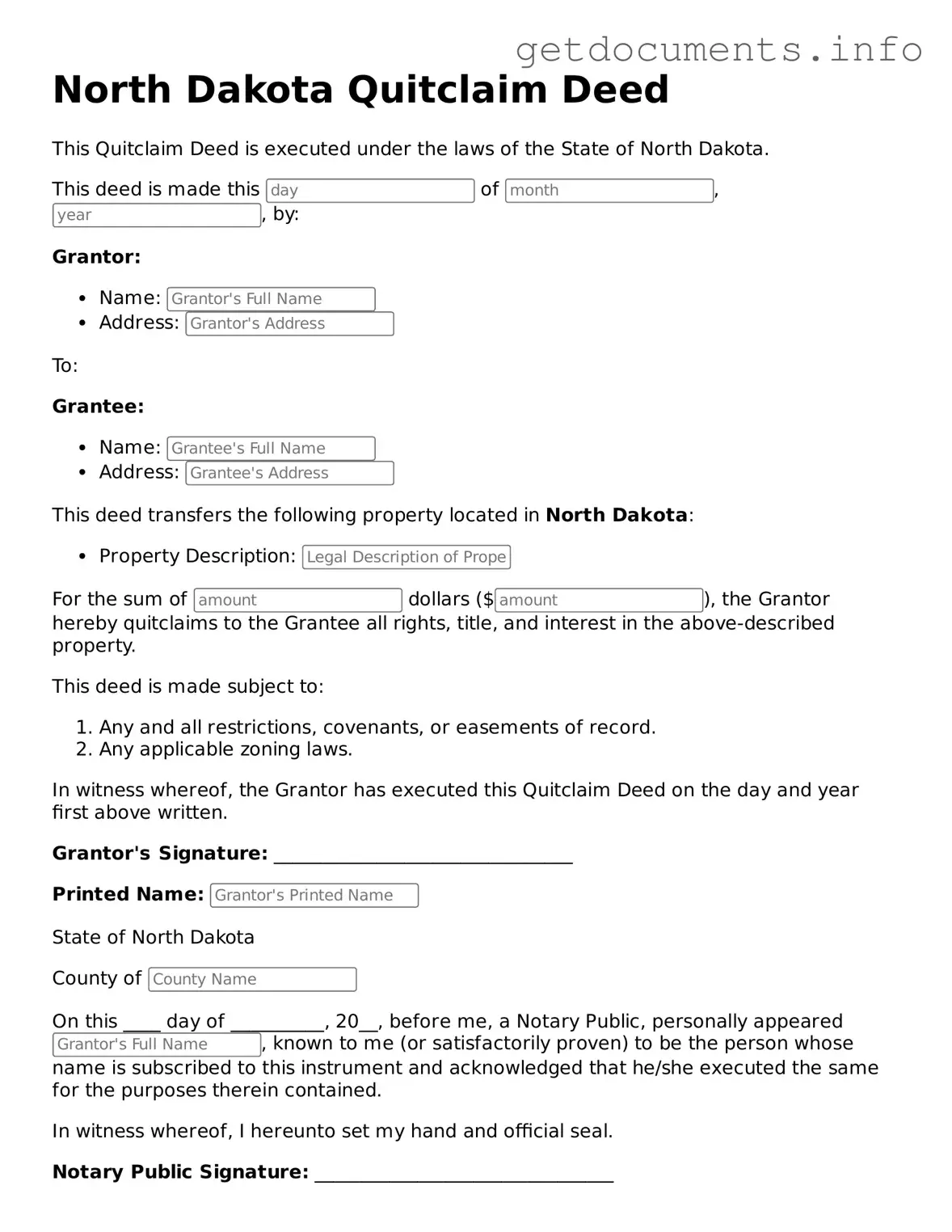Free Quitclaim Deed Template for North Dakota
A North Dakota Quitclaim Deed is a legal document used to transfer ownership of real estate from one party to another without any warranties. This form is commonly utilized when the transfer occurs between family members or in situations where the grantor does not want to guarantee the title's validity. To initiate the process, consider filling out the form by clicking the button below.
Access Quitclaim Deed Editor
